Log in or create new account to save this product to your wishlist.

How to Get Rid of Weeds in Your Garden
Removing weeds from your garden doesn't have to be a struggle. Explore effective control and prevention techniques for a carefree green space.
🌱 All important maintenance moments for your lawn during the year. Leave your email and we will send you the lawn calendar for free.
Enter your email
Receive the lawn calendar in the mail
Enjoy a green lawn all year round!

- Order by 2PM = shipped today
- 250.000+ satisfied customers!
- 60 day satisfaction guarantee
Weeds are an unavoidable reality in gardening. Every gardener should be equipped with the know-how of weed removal to thwart their attempts at taking over the garden. With a multitude of weed varieties in the UK, distinguishing between root weeds and seed weeds becomes imperative. Recognising this difference is often key to pinpointing the most effective solution for eradication.
- Do you know what you’re removing?
- Different ways to get rid of weeds
- How to get rid of weeds: 7 tips
- How to get rid of weeds in your lawn
Do you know what you’re removing?
Before you begin, it is necessary to know what kind of weeds you are going to remove. We distinguish between root weeds and seed weeds.
Root weed
Root weeds are perennial plants with often extensive roots beneath the ground. This makes the weed challenging to remove. If the root breaks, each piece with a knot can re-root and continue to spread. Examples of root weeds include thistle, nettle, bindweed, horsetail, couch grass, and clover.
Seed weeds
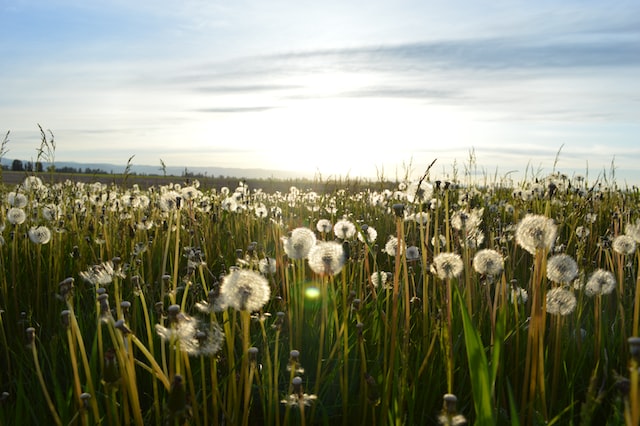
Seed weeds are often annual plants that spread through seeds, produced in large quantities. Examples of this type of weed include dandelion, ground elder, thistle, daisy, annual meadow grass, shepherd’s purse, and common chickweed.
Different ways to get rid of weeds
There are several ways to remove and prevent weeds.
Weeding by hand
Removing weeds by hand is the most effective way to get rid of weeds. You can see directly what you’re removing, and you don’t damage other plants. By weeding weeds by hand, you pull the plant out of the ground with its roots. It’s a time-consuming task but very effective.
Hoeing
Hoeing is a quick way to kill weeds, loosening the weeds from the root. However, hoeing isn’t suitable for root weeds — you actually make the problem worse if you cut through the roots without entirely removing them. But hoeing is particularly effective for killing seed weeds.
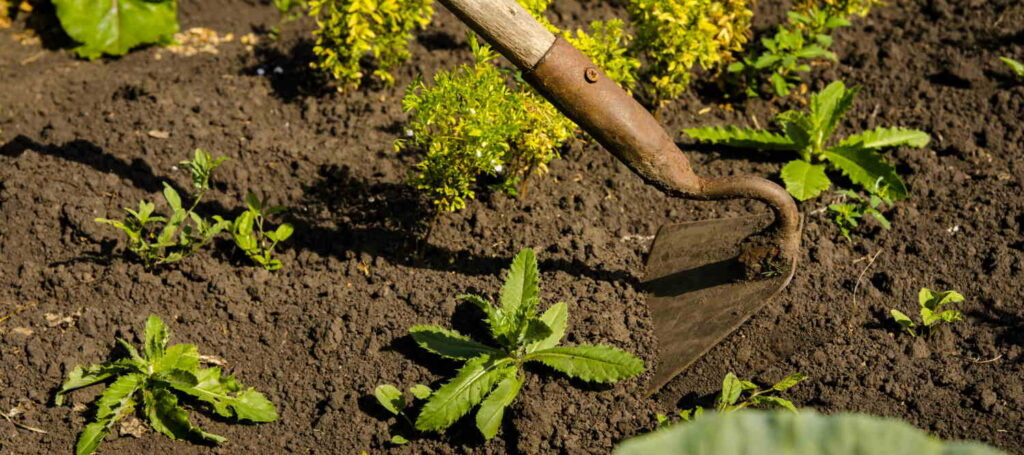
With tools
You can use various types of tools to remove weeds. Use a root or thistle weeder to remove weeds with roots and all. An additional advantage: you don’t have to bend over.
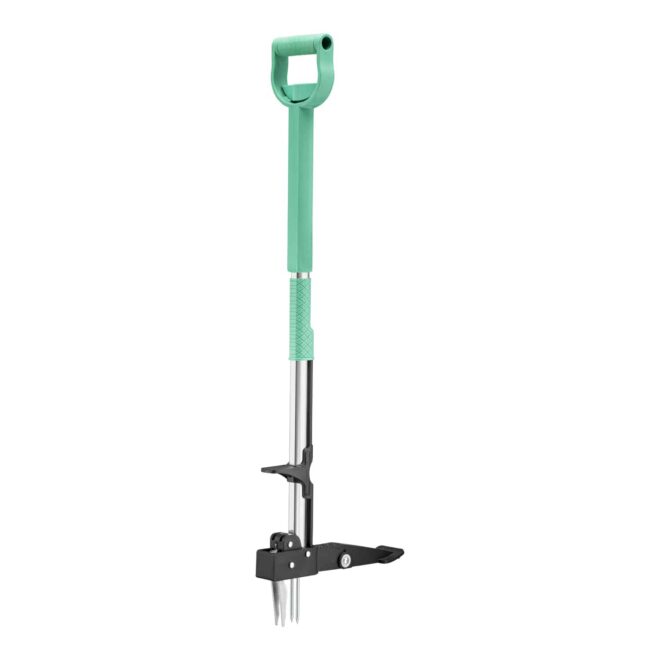
- Ergonomic design
- Durable, lightweight and easy to use
- Rust-resistant
Loosen seed weeds with a hoe, mattock, or cultivator. If you have weeds on your terrace, use a joint brush or joint scraper. Be careful not to damage your terrace tiles. Not all tiles can withstand wire brushes.
With a machine
Larger areas of tiles that need to be rid of weeds? With an electric or battery-powered weed brush, you can remove weeds or moss from your pavement without using chemicals or pesticides. You’ll see quick results, and it’s environmentally friendly.
Scarifying
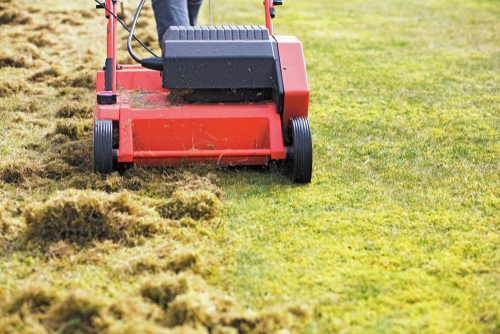
By scarifying, you remove moss or dead organic material, both of which can suffocate the lawn. You can think of scarifying as vertical mowing to give the grass more space to develop.
A gas burner
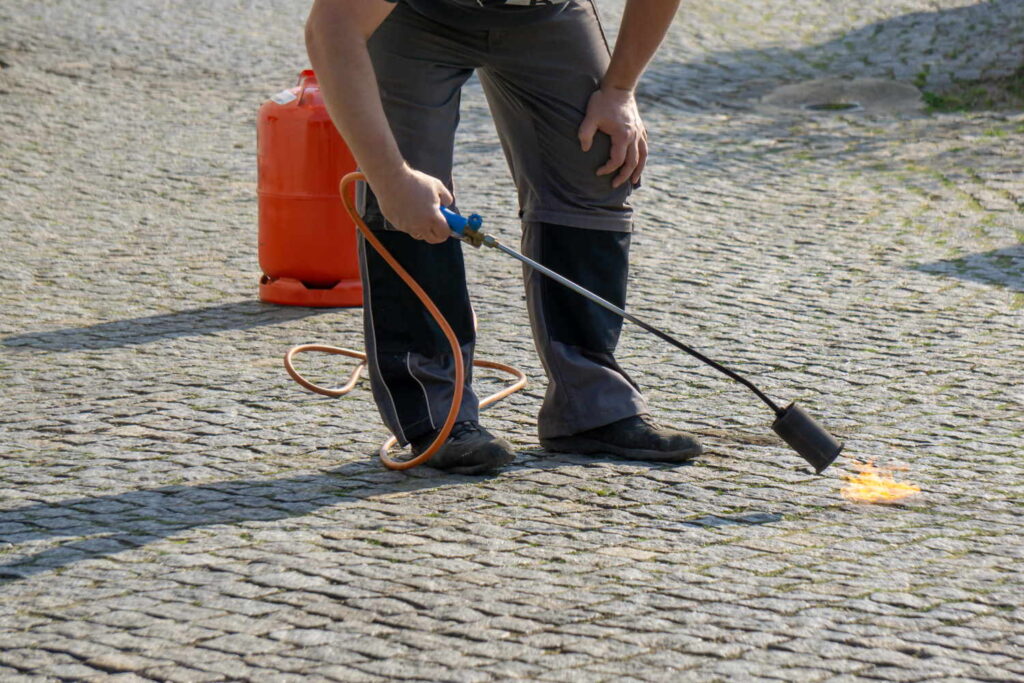
Weed burners are convenient, ecological, and ergonomically responsible. You heat the weed for a few seconds, causing the plant’s cells to burst open, dehydrate, and die. Repeat the burning process after a few weeks to make the weeds disappear completely.
An electric weed burner
It offers the same benefits as the gas burner plus one more: you don’t have to deal with gas bottles. Plug in the electric weed killer, and start burning!
Organic ground cover
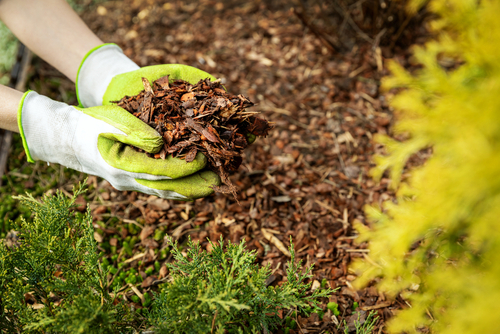
Cover the weeds with a layer of mulch, such as grass clippings, compost, or cocoa bean shells. Alternatively, plant ground-covering plants. Especially seed weeds will die off due to this.
Plastic
Cover the ground with black plastic. Anything beneath the plastic will die off due to the lack of sunlight. Allow it time; the plastic should stay in place for at least 3 to 6 months.
Boiling water
An often overlooked method to remove weeds is by pouring boiling water over the plants. It’s an easy and cost-effective way to get rid of stubborn weeds as hot water breaks down the proteins in them, causing the plant to die. However, it doesn’t eliminate the roots, so you may need to apply this method more than once.
Salt
Plants can’t withstand salty water, so a salt solution is an effective way to remove weeds. Be cautious to apply the salt solution very precisely; otherwise, surrounding plants may also die. Mix 1 part salt with 8 parts water and add some green soap in a spray bottle.
Tip: Don’t spray too deep into the ground, as it may affect the roots of neighboring plants. Also, keep in mind that a salt solution is not friendly to tiles, so consider this when using this method.
Baking soda
Another household remedy: baking soda. Mix 5 tablespoons of baking soda in a bucket of hot water. For precise application, transfer it to a spray bottle. Again, apply it carefully.
Cleaning vinegar
White vinegar is an effective weed killer that you can use both diluted and undiluted. Due to its acidity, it quickly kills weeds. However, avoid using it on soil that is already acidic, and be cautious about the amount you apply.
Before you know it, the soil may become too acidic, leading to the growth of acid-loving weeds, such as horsetail or moss. So, work selectively with this solution and pour it over the targeted weeds using a spray bottle or watering can.
Natural herbicides
Natural substances that are not harmful to plants. Some herbicides dissolve in just a few hours, allowing you to plant or sow on the same day. Use a pressure sprayer, carefully read the instructions, and wear protective clothing. Natural herbicides include acetic acid clove oil and citric acid.
Look for products with these ingredients to be kinder to the earth.
Chemicals
The use of chemical methods is limited to professionals with a phytosanitary license. If the weeds keep coming back persistently, seeking professional assistance is the most efficient way.
How to get rid of weeds: 7 tips
So, you know how to kill weeds in your garden, it’s time to think about getting started.
Tip #1: Good preparation is half the work
Determine which type of weeds you need to remove, and choose an appropriate method. Mow your lawn a few days before using week killer for the best results.
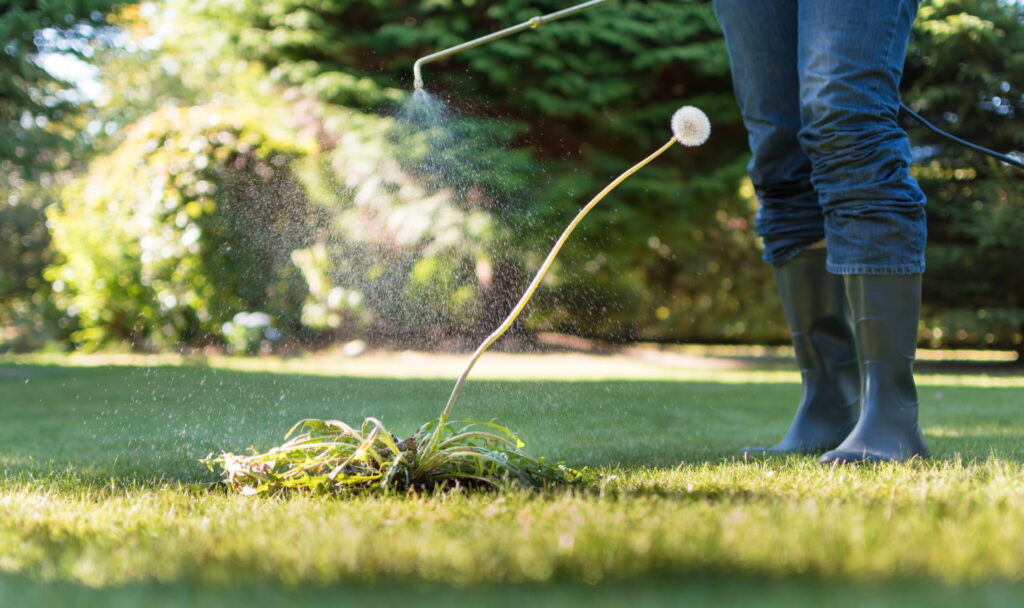
Tip #2: Consider the season
The best time of year to tackle weeks is the spring or early summer. This is when weeds are most actively growing, and the soil will be moist.
Tip #3: Avoid the wind
If you use herbicides, pick a time when there’s little or no wind. Otherwise, the breeze will carry the weedkiller to other plants, and before you know it, you’ve got a plant graveyard on your hands.
Tip #4: Separate the weeds for your good plants
Cover your good plants with plastic or use a sprayer, pressure sprayer, or watering can. This will prevent weedkiller drift. Be as targeted as you possibly can.
Tip #5: Save your back
Weeding can be back-breaking work, so take care of yourself while you weed if you’re going for the manual approach. Wear knee pads, and practice good posture while you weed to protect your back.
Tip #6: Protect your pets
Keep your pets away if you’re using herbicides or weedkillers on your lawn. Always read the instructions if you’re using a chemical solution, and make sure your pets don’t play on the lawn or around your flowerbeds.

Tip #7: Protect your new lawn
If you’re trying to kill weeds in your lawn and have recently sown new grass seed, ensure your weedkiller is suitable for new lawns. Using chemical weed killers on a lawn less than six months old is generally not recommended.
How to get rid of weeds in your lawn
Once you’ve removed your weeds, you’ll want to know how to stop them from returning. Follow our handy tips!
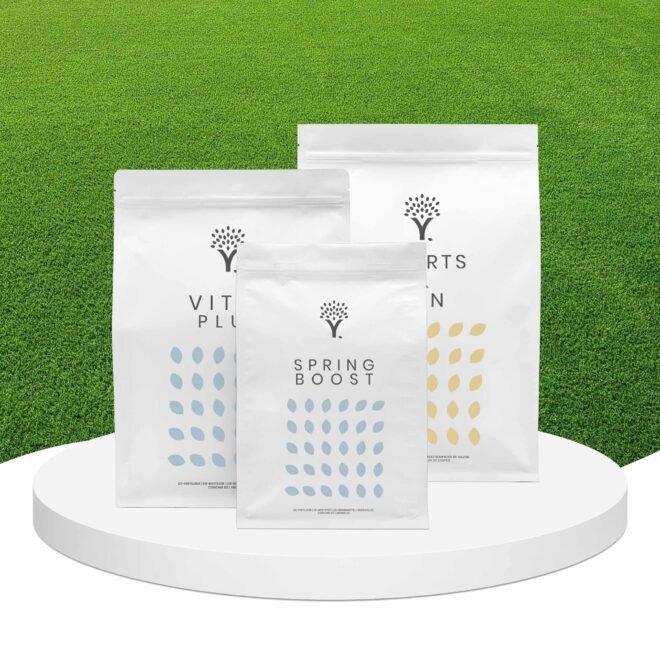
- Makes your lawn completely weed-free
- Makes the grass resistant to heat, diseases, and stress
- Boosts your lawn’s strength and resilience
Tip #1: New garden?
If you’re planting a new garden or sowing a new lawn, ensure the soil is as free of weeds as possible. Start with a blank canvas!
Tip #2: Keep your lawn dense
Weeds love a weak lawn with lots of bald patches. So, don’t give weeds a chance by keeping your lawn as dense as possible. Overseed the bare spots and mow your lawn regularly once the seedlings have established.
Tip 3: Scarify your lawn
Like all plants, the roots of grass plants need oxygen. So, aerate and scarify your lawn at least once a year.
Tip #4: Mow regularly
Mowing makes your grass grow more densely, and that helps your lawn form a barrier of protection against weeds. Maintain a minimum of 3cm for an ornamental lawn and 4cm for everyday-use lawns.
Tip 5: Fertilise your lawn
A healthy lawn is the best defence against weeds. So, fertilise your lawn three to four times yearly for the best results.
Tip #6: Apply lime
Weeds love acidic soil, while grass plants prefer neutral soil (around pH 5.5-6.5). So, sprinkle lawn lime to help neutralise your acidic soil. Great for killing moss!
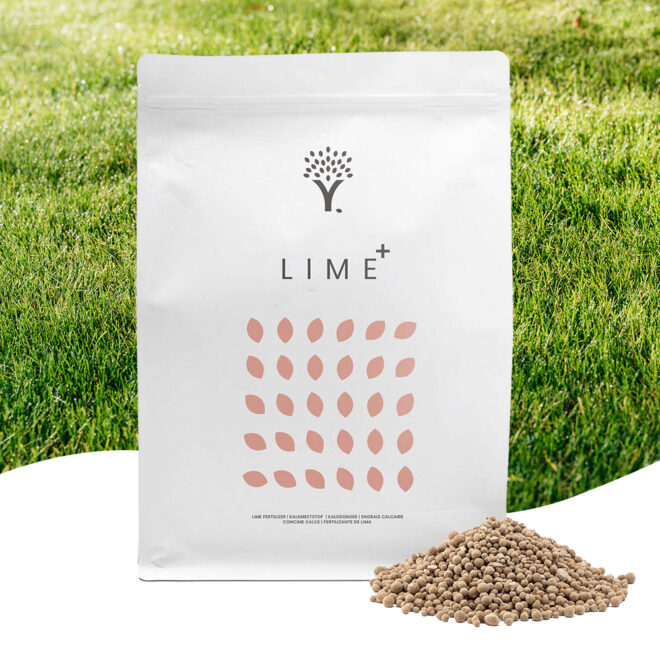
- Helps your lawn absorb more nutrients
- Invisible after application
- Quickly absorved into the soil
Tip #7: Mulch
A mulch layer of, for example, grass clippings, garden waste, compost or wood chips prevents or reduces weed growth. We can teach you all about making your own mulch.
Tip #8: Anti-weed cloth
If you’re laying a terrace or driveway, use anti-weed cloth to prevent weeds from taking root.
Any questions?
Hopefully we’ve given you enough tips and tricks to fight weeds in your garden! Want to learn more about weeds and moss? Or are you looking for more gardening tips? Then you’ve come to the right place!
And if you have any questions, you can always leave a comment or contact us, we’ll be happy to help.
Happy weeding!
-
How to Grow Eucalyptus in British GardensWith a little love and care, eucalyptus trees can thrive in English gardens. Since they don’t germinate well without proper help, there are not considered invasive. So, there is no reason not to plant them if you enjoy their looks.Read more
-
Transform Your Garden with All-Year-Round Flowering PlantsDid you know you can enjoy blooming flowers even in January? With the right selection of all year round plants, there’s no need to wait until spring to add some colour to your garden.Read more
-
How to Create a Butterfly Garden: A Simple Guide for British GardensThe UK's butterfly population includes 59 different species. These beautiful winged creatures face a steady decline because of habitat loss, pollution and changing weather patterns. Your garden can become a vital link between nature reserves and natural habitats. Let’s explore how.Read more
-
Volcanic Rock Dust for Your Garden—Application and TipsDid you know that volcanic rock dust is a brilliant organic soil improver? This article explains exactly what it's good for and how to use it properly.Read more
-
How to Use Landscape Fabric ProperlyIf weeds or erosion in your garden are troubling you, landscape fabric might be the solution. We’ll explain how and when to use it properly, just keep on reading.Read more
-
Hostas: A Complete Care GuideIf you have a north-facing garden or some shady corners on your property, hostas are the plants for you. These green delights thrive particularly well in partial to full shade and require consistently moist soil to perform at their best.Read more
-
How to Grow Grapes in Your Garden: A Simple Step-by-Step GuideGrapevines produce some tasty fruits, but often they are simply grown for their gorgeous leaves. Whatever your motivation may be, we have a guide on how to grow grapes for you.Read more
-
Worm Composting Made Simple: From Kitchen Scraps to Garden GoldDid you know that a single pound of composting worms can devour half their body weight in waste every day? That's roughly twelve pounds of kitchen scraps transformed into garden gold each month! We will look at how to make this happen.Read more
Leave a comment
Your answer will be displayed on the site and the interested party will be notified by email.
Leave a comment
Have a question or want to share your experience? Leave us a comment.

- Order by 2PM = shipped today
- 250.000+ satisfied customers!
- 60 day satisfaction guarantee

- Order by 2PM = shipped today
- 250.000+ satisfied customers!
- 60 day satisfaction guarantee

- Order by 2PM = shipped today
- 250.000+ satisfied customers!
- 60 day satisfaction guarantee

🌱 All important maintenance moments for your lawn during the year. Leave your email and we will send you the lawn calendar for free.
Enter your email
Receive the lawn calendar in the mail
Enjoy a green lawn all year round!












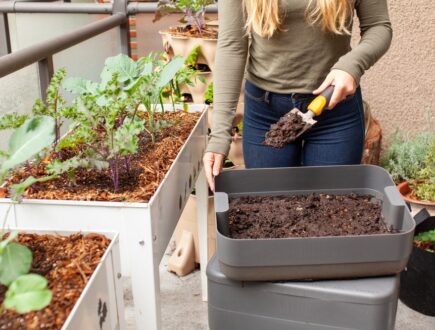



 Summer Deal! Get 15% off the
Summer Deal! Get 15% off the 




Comments (0)
There are no comments yet. Well then, what are you waiting for to
Be the first to write your comment!inaugurate this pretty page?
Do you have some comments?